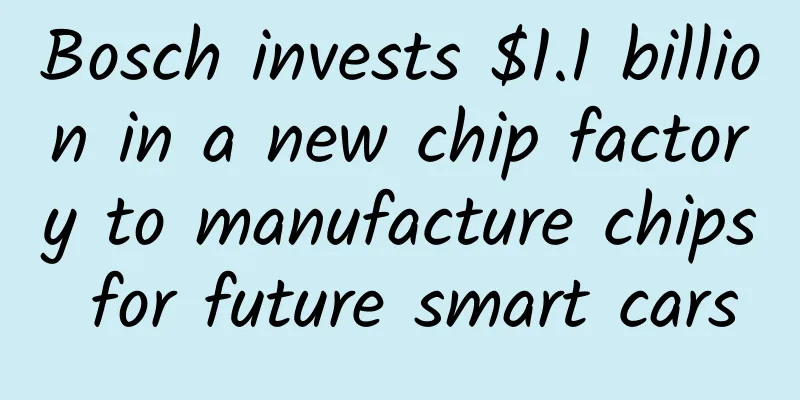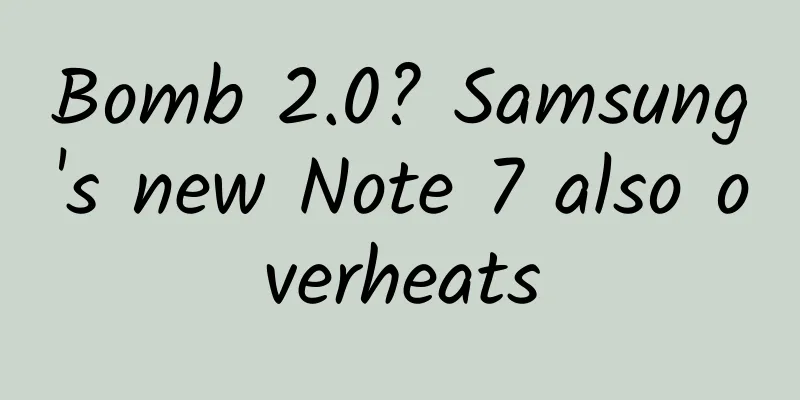What are the differences between 2B and 2C in the core logic of business operations?

|
There is basically a consensus now: C-end product thinking and operation routines will not work on the B-end. Why is this? There are many directions worth exploring and analyzing on this issue. Today I will analyze it from the following aspects. one,First is the understanding of 2B and 2C: B2B is the abbreviation of Business-to-Business, which refers to one organization selling products or services to another organization for its own use or for sale to other businesses. B2C is the abbreviation of Business-to-Customer, which refers to the sale of products and services directly to consumers, which is commonly known as commercial retail. B2C business and B2B business have a common origin in the marketing theory system, but due to the differences in their respective buyers and markets, it is necessary to conduct in-depth research and analyze the similarities and differences between their respective businesses in order to use different Internet marketing strategies for different businesses. two,Next, let’s look at the similarities and differences between 2B and 2C that product operations need to know 1. Different customer sizesSince B2C business is directly facing the end consumers, there are often many buyers. Even for some niche products, if consumers are classified and concentrated according to gender, age group, purchasing power, etc., theoretically, the audience can easily reach tens of millions. Therefore, for any B2C enterprise, it is difficult to accurately count and predict the entire market size related to its own products. Compared with B2C business, B2B business mainly targets institutional customers such as enterprises, organizations, and governments, and has a relatively narrow customer base. Once the product parameters and uses are determined, the corresponding market size is basically fixed and cannot be changed by human subjective will. Therefore, it is easier for B2B business to accurately position the target customer group, which is beneficial for controlling market size, market distribution, and industry trends at the macro level, and for focusing on product value and conducting personalized marketing at the micro level. 2. Different transaction unit pricesB2B business contracts are generally signed in the form of a company. Each company has its own approval process and payment process for external contracts. It is not decided by one person, but is mostly determined by the internal system and procedures of the enterprise. Taking the simplest one-time payment contract as an example, the payment action alone involves three steps: purchase application, leadership approval, and financial payment. If it involves deposit production and batch delivery and batch combination contracts, the entire transaction cycle may include factory sample preparation, sample confirmation, bulk production, factory inspection and delivery, warranty period, etc. The whole process is complicated and lengthy. The characteristic corresponding to the transaction process is that the B2B transaction amount is large. For example, in B2C business, buying a shirt for 300 yuan does not involve much risk, and the maximum loss is 300 yuan. However, there are great risks in B2B business when purchasing equipment worth hundreds of thousands or even millions of yuan. First, whether the performance and quality of the equipment itself meet the contract standards; second, the equipment may be damaged during transportation, loading and unloading, and even more seriously, you may encounter a dishonest company and lose both your money and goods. Therefore, in B2B business, it is necessary to establish strict process systems, which will help control risks. 3. Different decision-making methodsIn the B2C scenario, individual consumers do not necessarily have a clear purchasing plan when purchasing products or services. It may be based on one's own consumption experience, advertisements seen, opinions of relatives and friends around, or a word from colleagues. If you are happy, you will buy it, and if you are unhappy, you will not buy it. It is full of emotional factors. Organizations purchase products and services primarily for business production, consumption, or trade, usually on a planned basis. B2B procurement will have relatively clear decision-making basis, and usually make purchasing decisions based on enhancing profitability, reducing costs, improving productivity, reducing risks, etc. It is a very rational decision-making process. Based on this feature, when we conduct B2B business marketing, we should focus on the goal of promoting customers to make rational purchasing decisions, and highlight the value of the product through unique product selling points, high-quality customer reviews, and targeted marketing activities . On the contrary, when conducting B2C business, we should focus on promoting customer consumption through sensory impact and emotional resonance. 4. Different focus anglesB2B business often has a limited number of customers, and we hope to maintain long-term cooperation with most customers, because B2B companies have a higher risk of changing suppliers, and customers will not easily change suppliers. Since both parties are industry experts, they focus more on mutual benefit and long-term cooperation. Generally speaking, the business relationship between buyers and sellers in B2B business is close and they are relatively stable partners. B2B marketing products are either standardized or customized according to customer needs. Generally speaking, the price of the product is determined by the buyer and seller through consultation and negotiation, and generally follows the principle of "raw material cost + labor cost + production loss + process cost + appropriate profit". Since "relationships" are the key factor in B2B business, B2B sales focus on key account management and the people who influence purchasing decisions when developing new customers. The sales development cycle should be designed for customers, and all marketing activities should be conducive to building relationships with customers and promoting communication. To emphasize the importance of "relationships", let us give an example: Most B2C customers are highly sensitive to prices. If there are well-planned promotion policies and novel promotion activities, such as limited-time flash sales and bargaining assistance, sales can indeed be promoted in the short term. However, B2B business customers are extremely insensitive to these promotion policies. Customers are more sensitive to relationships. The "relationship" here is mainly reflected in the degree of trust. Without relationships and trust, there is no need to negotiate prices. 5. Different purchasing processesIn B2C business, one person is involved in the use, decision-making and payment. In the sales process, there is usually only one person involved in this business. Building a good relationship with him can basically secure the business. B2B purchasing behavior is a process. The purchase volume is large and it is not decided by one person. Even for a small B2B, even if it is a store run by a couple, the couple still need to discuss to decide what to buy and what to sell. Purchasing decisions are influenced by many people, sometimes even multiple departments and organizations within a company. For example, if a company wants to purchase an ERP system, the purchasing department, technical department, finance department, manufacturing department, and sales department may all have a certain say. From this perspective, B2B marketing deals with both organizations and individuals. Although the core of an enterprise is still the individual, since the enterprise has its own system based on operating rules and interests, individuals often consider more when making decisions in the enterprise. 6. Different transaction cyclesMost B2C businesses are final consumer goods, which can be delivered on a cash-on-deal basis, and are very flexible. The lag in B2B business marketing is very obvious. Whether it is promotion or sales, current efforts will not show results immediately, but will lag for a period of time. A promotional activity, such as participating in an exhibition, may take several months after the exhibition to produce results. When a marketer visits a customer, it may take several months or even years from the first visit to the final transaction. This is determined by the nature of B2B business. B2B procurement plans are generally carried out in an orderly manner. If it is a one-time purchase such as equipment upgrade, the procurement plan is usually completed very early, and it is impossible to have new demand in a short period of time. If it is a productive procurement behavior, a stable supply chain channel has generally been formed and will not be changed midway unless absolutely necessary. B2B business development begins when the first sales action occurs, that is, the first contact with the customer. In view of this, when you develop new B2B customers, you must continue to follow up. In other words, customer follow-up and maintenance are crucial. Although it may not produce immediate results, planned follow-up and maintenance will make all your promotion and visit efforts go to waste. This will be mentioned later. 7. Different brand conceptsIn the B2C business, when people talk about consumer goods, they often focus on the brand, but when they talk about machinery and equipment, they often ask which company the product is from. In B2B business, buyers pay much more attention to supplier strength than product brand. When purchasing industrial products, people will naturally look at which companies in the industry produce the product, who the leading companies are, which companies are trustworthy, compare prices from different companies, and make careful purchases, because the company's strength and reputation are the fundamental guarantee for the safety of corporate purchases. Therefore, B2B buyers are more interested in company brands than product brands. Therefore, if a company wants to truly fully launch the market, it must establish its corporate status in the minds of users. In the B2B market, product branding can only help you become a factor that customers can consider, but it will not necessarily guarantee that customers will choose you. B2B buyers use more rational thinking when choosing products or services for their company. They are based on considerations of enhancing profitability, reducing costs, improving productivity, and reducing risks. This is not to say that product branding is not important for B2B business. Brand awareness and reputation are necessary for any business and can leave a good first impression on customers. From the above differences and similarities, we can see that there are obvious differences in the core business logic between 2B and 2C. Therefore, it also affects the methods of operating C-end and B-end products to a certain extent. Therefore, no matter how good the operating strategy is, it is definitely inappropriate to copy and paste it, and it requires more consideration. The author of this article @罗建国 is compiled and published by (Qinggua Media). Please indicate the author information and source when reprinting! Product promotion services: APP promotion services Advertising platform Longyou Century |
Recommend
Do we really need three meals a day?
The idea of "three meals a day" is ve...
A doctor switched to catching snakes and discovered the new king of poison in Asia! How crazy is this choice at the age of 35?
2025 is the Year of the Snake in the Chinese luna...
Faced with knowledge blind spots, how should operations staff quickly learn while working?
In sociology and economics, there is a commonly u...
How does Zhurong cope with the winter on Mars? The engineering team explains
According to the Lunar Exploration and Space Engi...
Why does the Hammer phone have three physical buttons?
Smartphones are in great demand today, and all ma...
Be careful of rotting your feet when wading after rain! Here’s what you should do →
In addition to the direct damage of collapsing bu...
A powerful anti-inflammatory ingredient is hidden in this "golden seasoning"
Curry is really delicious! Curry chicken, curry b...
China Automobile Dealers Association: "China Automobile Retention Value Report for January 2025" Wenjie M9 ranks first in the retention value of China's pure electric vehicles
In the "China Automobile Retention Rate Repo...
Chinese Army at CES: Innovation gap still exists Shenzhen companies 469
"Now if you don't go to the US to attend...
Xiaomi Tablet's Strongest Rival is Not iPad
On May 15, Xiaomi held a new product launch confer...
How to explore iOS promotion channels?
Question 1: I don’t know where to tap into the iO...
11 dams blocked the century-old flood. The city built by "Zhejiang people" 5,000 years ago was so powerful!
More than 5,000 years ago, the wise Liangzhu peop...
How to promote user conversion? 99% of them used this trick~
Today, I want to share with you a trick to promot...
It's confirmed: 10 more astronauts have been selected for the return to the moon, codenamed "Artemis"
The US plan to return to the moon has been a hot ...









